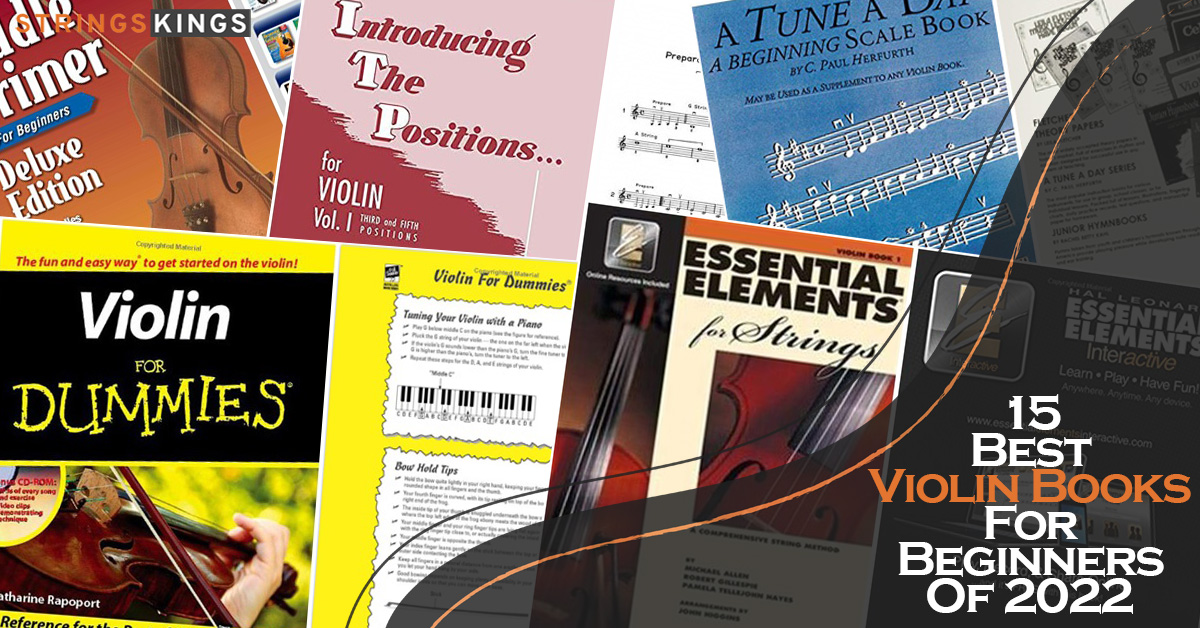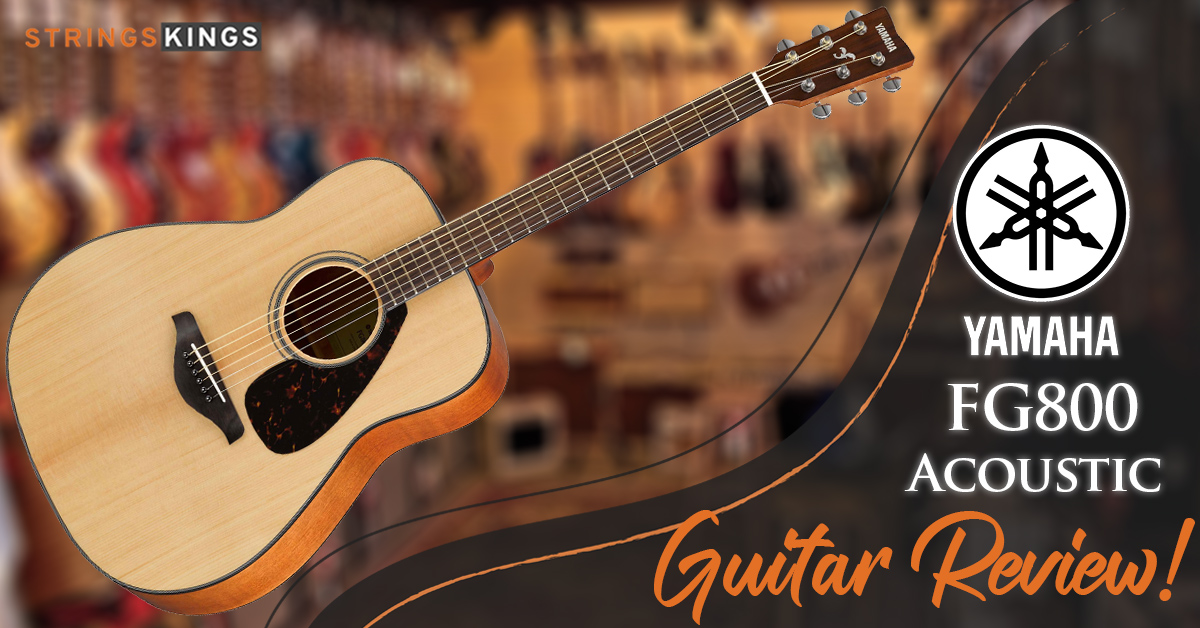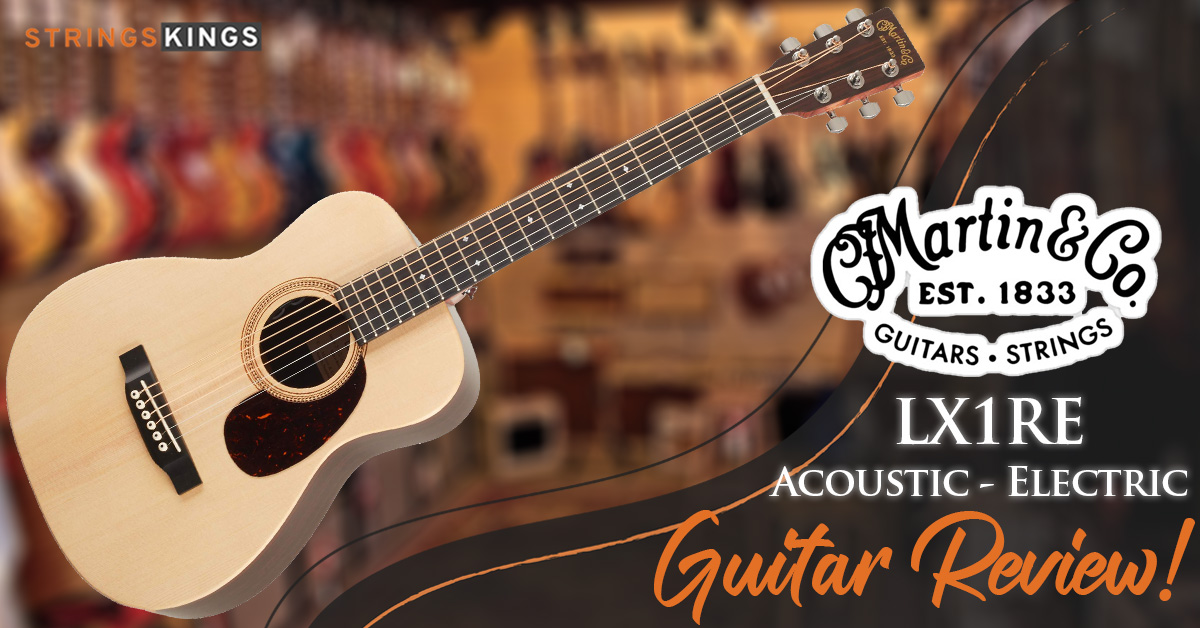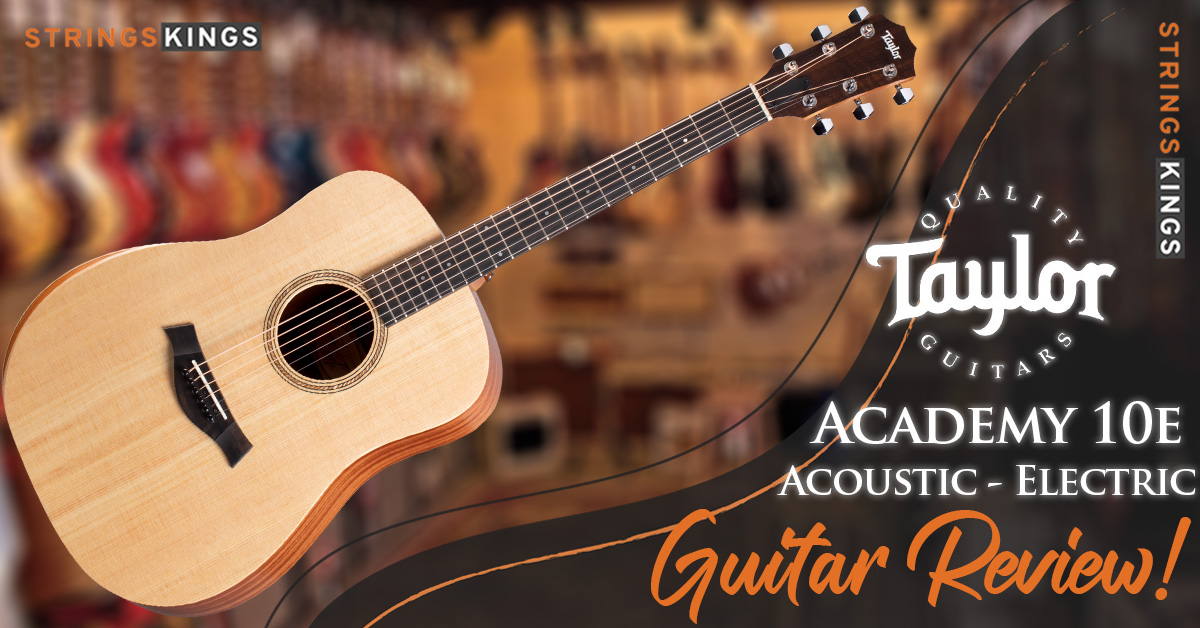Table of Contents
Baritone Ukulele
For those who are beginners, you need to know that any of the 4 ukulele sizes will make a great starter instrument. As you will discover in the ukulele buying guide, the soprano, concert, and tenor sizes are the most typical ones.
All three instruments have identical tuning and chords. Most of the educational materials you will be able to find cater to owners of any of these three sizes.
The biggest difference between Tenor and Baritone Ukuleles
The main difference between Tenor uke and Baritone ukuleles is their tuning and their size. The Baritone ukuleles are 30″ long, and also they are larger than the Tenor ukuleles which are 26″ long.
When it comes to tuning, the Baritone ukuleles are traditionally tuned to DGBE with a low D-string, while from the other side, the Tenor size ukuleles are usually tuned by the standard uke tuning which is gCEA with a high G-string.
Baritone standard tuning and Guitar tuning
Guitar players will have an easier time learning the Baritone ukulele because the Baritone DGBE tuning is identical to the bottom four strings on the guitars. Both tuning systems use the same intervals (5, 1, 3, 6).
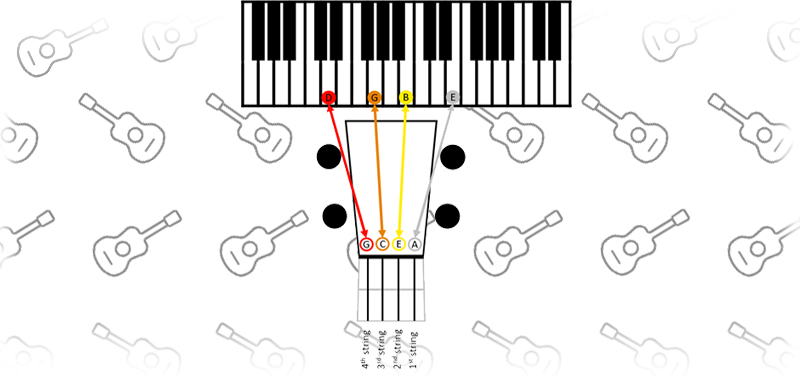
This means they are going to use the same chord shapes, however, the chord shapes will produce a chord of a different name, just like moving chord shapes up and down the fretboard.
For instance, a C-major chord on a tenor Ukulele will be played identically to a G-major chord on a Baritone Ukulele (or the bottom four strings on a guitar).
Tuning the Tenor ukulele
The re-entrant (high top string) tuning of the tenor uke is also like the usual tuning of most other ukulele sizes.
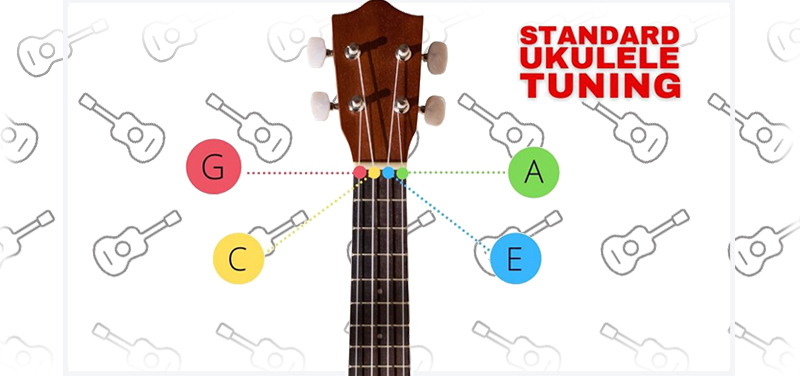
The tenor ukulele can also be tuned to GCEA with a low G string as an alternative to a high re-entrant string.
Can the Tenor ukulele be tuned like a Baritone ukulele (and Vice Versa)?
The answer is Yes, you will be able to tune them and these tuning systems are purely traditional.
All you need to do is to replace the strings with the appropriate strings set for your ukulele size and desired tuning setup.
Tenor and Baritone ukulele’s size difference
If you take a look at a tenor ukulele and a baritone ukulele, the very first thing that you’ll notice is the difference they have in size. You can expect a tenor ukulele to be about 26 inches in length, while a baritone is about 30 inches in length and the size depends on the design as well.
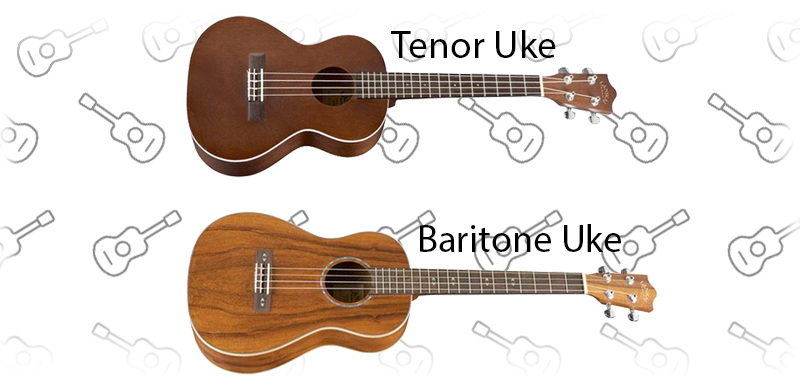
While you’ll discover that both instruments are about the same width if you turn them on their side, you’ll notice that the neck of the baritone is noticeably longer, and the body of the ukulele is also significantly larger.
This larger size contributes to the lower tone produced by the baritone, as a result of the bigger body of the instrument, the lower the tone tends to be. However, that isn’t the only reason.
Tenor ukulele and Baritone Ukulele Weights
The weight of these ukuleles even of the identical dimension can vary significantly depending on the materials used. Nonetheless, as a common rule, tenor ukuleles weigh around 1.5 pounds while baritone ukuleles weigh around 2 pounds.
You need to know that these are very general numbers and shouldn’t be relied on for making particular selections or choices.
For those who need an accurate weight for a particular instrument, it’s best to look it up differently for each instrument and we have added precise numbers in all our reviews on StringsKings.com.
Tenor vs Baritone instrument portability
The Tenor ukuleles are smaller and more portable in comparison with the Baritone ukuleles. Tenor ukuleles are a better choice for players that are looking to take their instrument on their trips and adventures.
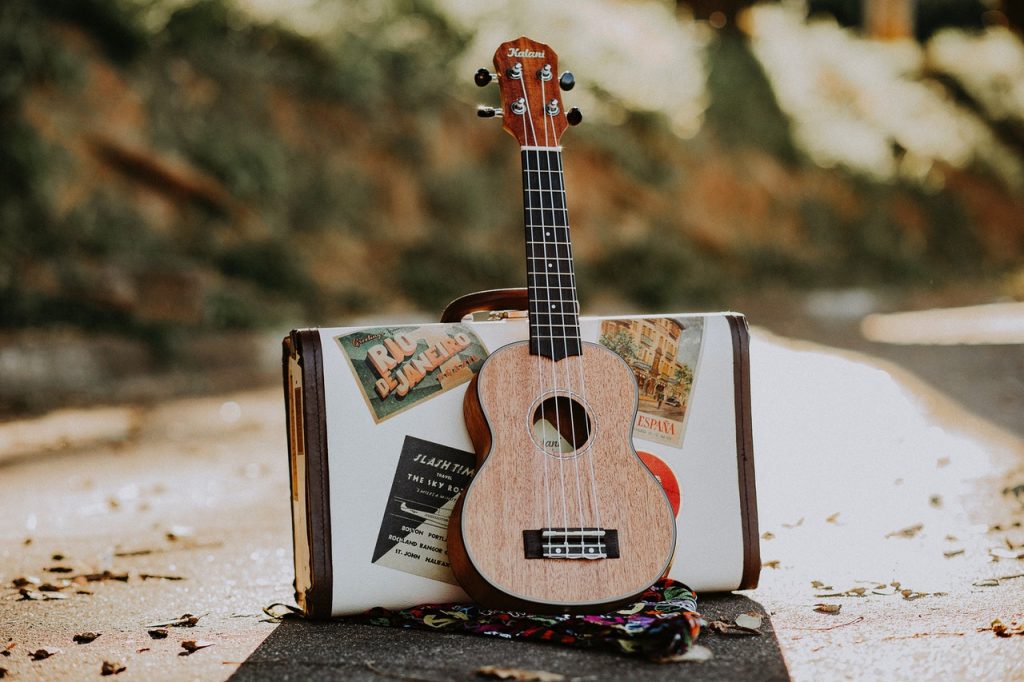
On the other side, the size difference is minor and will only matter to the players that are restricted with space.
Why you should pick a Baritone ukulele?
1. Bigger Size
One of the struggles that players have with the ukulele is the size, principally the dimensions of the fretboard, and getting your fingers comfortably in those areas. However, some players also feel like the instrument is a bit small in their arms and feels lost against their bodies.
The baritone is just that little bit bigger and heftier, so it’s easier to play and it feels more substantial.
2. No High G
One of many things that some players find complicated about the ukulele is the high G at the top.
On most stringed instruments, the highest note is on the bottom and you work your way up. However, this is one of those things that give the ukulele its distinctive sound.
But not only can it be complicated to play when you’re learning or you’re accustomed to different stringed instruments, but you also get ukuleles that use a low G rather than a high G, and it’s something that you have to actively choose between. With a baritone, you just don’t have to deal with any of these G “issues”.
3. Baritone has a lower sound
While the ukuleles mostly suggest that high island sound, it doesn’t appeal to everyone.
Some of the players prefer the lower sound and additionally feel more comfortable and can better coordinate their voice with lower tones.
4. Baritone is a great gateway instrument
A baritone is a good gateway instrument if you’re a ukulele player who would like to migrate to guitar or a guitar player who would like to move to the ukulele.
Guitar players can move down to the smaller instruments with identical notes, and get used to that earlier than tackling the new arrangement.
You can also take a look at this great video about Baritone Ukulele by
‘Marco Cirillo Ukulele’
Baritone Size Ukulele – Buying Guide
Laminate in comparison with Solid wood
The main factor that makes a big impact on the quality of the instrument and its value is whether or not the baritone body is constructed from solid wood pieces or laminate.
Strong and solid wood produces a greater, natural sound. The denser the wood means better sound and additionally, it will mean that the instrument will be costlier. For instance, a strong Koa wood instrument will set you back more when compared with a solid mahogany instrument.
In case your budget does not extend to solid wood instruments, but you want that higher quality sound, a hybrid is a good midway point. It will mean that the top is made out of solid wood, while the sides and back are made from laminate.
You’ll be able to learn about that uke before upgrading to a better and costlier instrument and when you will have a better idea of what you want.
Price
You would possibly begin your search with a price range in your mind. If you’re a baritone fanatic, and you already know what you want, you may spend as much as $2,000 getting a top-range instrument that includes all of the features that you are after.
However, you will be able to get a decent, solid wood instrument that’s suitable even for performing for less than $500.
In case you are a beginner, or you’re simply experimenting and you don’t want to make a big investment in an instrument you aren’t sure you’re going to proceed with, you can get some model that is respectable to play for less than $150.
For those who filter your search results inside these price brackets, you’ll get to what you want and need more quickly.
Frequently Asked Questions
Will Tenor Ukulele Capos Fit Baritone Ukuleles and Vice Versa?
Whenever you look for ukulele capos you will probably notice somewhere mentioned that they fit all four ukulele sizes (soprano, concert, tenor, and baritone).
Most of those capos are adjustable and you will find them easy to use on different ukulele sizes like concert and tenor ukuleles or even on Baritone and Tenor banjo ukuleles.
Are Baritone and Tenor Ukuleles Available with Cutaway Bodies?
You will find both of these sizes available in cutaway body appearance. With these models, players can access the notes that are traditionally harder to reach at the highest levels of the fretboard.
The Tenor ukes have more models available to choose from because they are used more frequently.
Is the Baritone ukulele easy to play?
The Baritone ukulele is not hard to play, which makes it an ideal selection for beginners.
The other ukulele sizes are also beginner-friendly however you might feel uncomfortable playing in case you have long or thick fingers.
Smaller ukes have a tighter fret and string spacing, requiring players to squeeze their fingers into frets when forming chords.
This isn’t an issue for kids and petite adults but for players with larger hands, it’s frequent to place your fingers on the wrong strings by accident.
The baritone ukulele provides a wider fret and string spacing, which implies that your fingers will have extra playing room. If you find smaller ukes to be too small for you, think about getting a baritone instead.
Differences in String Tension Between Baritone and Tenor Ukuleles?
That is relatively low in comparison with steel string guitars which can have upwards of 200 lbs of string tension. This low tension is a result of the ukulele’s use of nylon strings (as opposed to steel) and its relatively smaller size.
Last Words
Hopefully, this comparison will help you understand better the similarities and differences between these two largest ukulele sizes and help your decision if you are buying one.
Happy Strumming!


